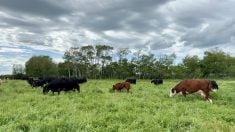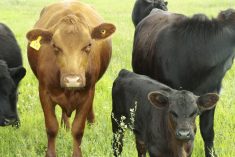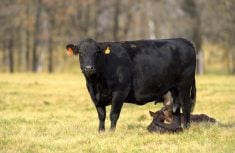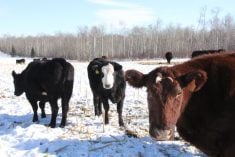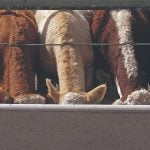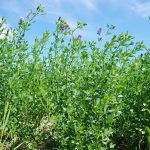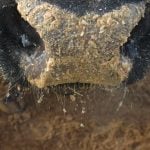With small cereal silage season being nearly complete in Western Canada, it is a good time to reflect on fibre use in diets for feedlot cattle. The science of fibre has advanced substantially over the past 10 years and newer fibre characteristic assessments can help formulate diets to reduce risk for both digestive disorders and production-limiting diets.
Before diving into the research, there is some terminology that needs to be clear.
Physically effective neutral detergent fibre (peNDF)
Read Also
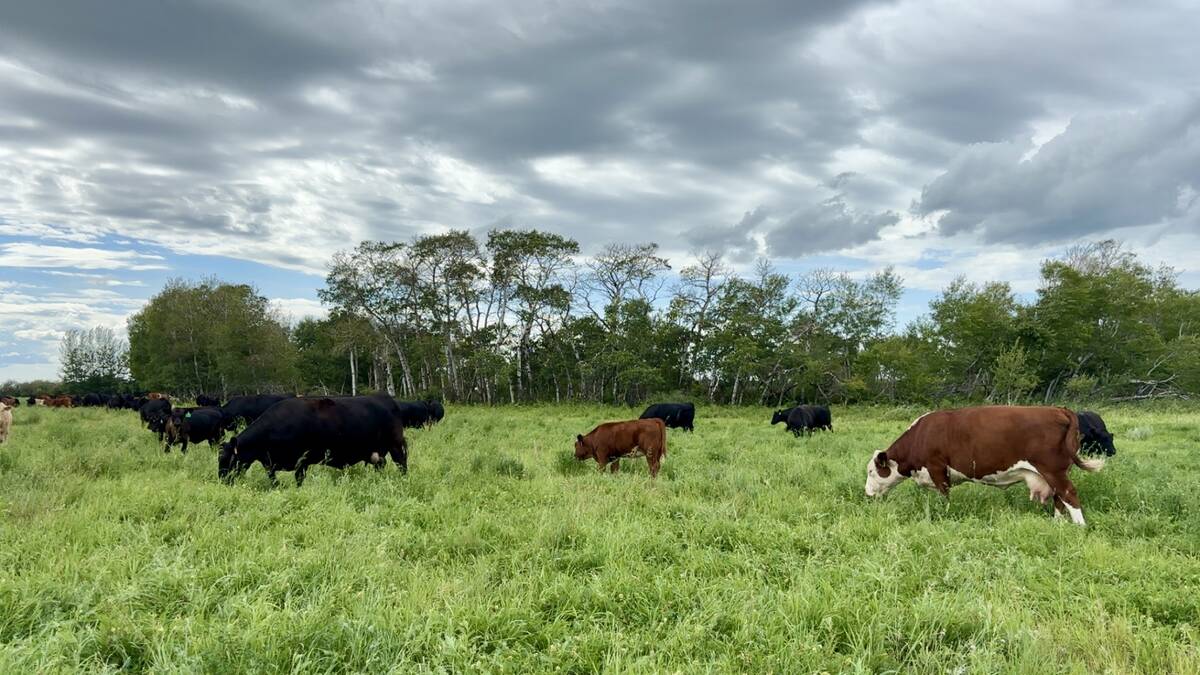
Preg-checking season is the perfect time to re-evaluate your beef cows’ nutrition
A look at three critical minerals that are often deficient in Canadian beef cow herds
The peNDF is the portion of the diet that provides the necessary “scratch factor” that promotes chewing and ruminal contractions. Chewing promotes saliva production and adequate ruminal motility drives nutrient absorption. Both nutrient absorption and saliva are essential to buffer ruminal pH, promoting ruminal health and effective feed digestion.
The chewing activity stimulated by peNDF also helps reduce particle size of the consumed feed, increasing the surface area for ruminal microbial enzymes to act and break down the fibre and other feed components. The peNDF is a particle-size-based measurement calculated by multiplying the proportion of particles that are retained on the eight- and 19-mm sieves of the Penn State particle separator. That proportion is multiplied by the concentration of neutral detergent fiber in the diet.
Undigested NDF (uNDF)
This is the portion of the neutral detergent fibre (NDF) that is unlikely to be digested, no matter how long it sits in the rumen. The greater the uNDF concentration of a diet, the greater the ruminal filling effect. It has also been shown that the uNDF fraction helps develop a stable rumen mat, stimulating rumen motility, rumination and the buffering responses described above.
Due to its indigestible nature, uNDF does not have a positive nutritional contribution to the diet and an increase in uNDF generally indicates a dilution of dietary energy. The uNDF is usually measured in the lab by incubating samples of the feed in buffered ruminal fluid for 240 hours. The residue remaining is then analyzed for NDF.
Why measure these fibre components?
For finishing cattle, producers strategically incorporate large proportions of cereal grains and digestible byproduct feeds to stimulate growth. Forages are often included in the diet at a relatively low proportion to avoid dilution of the dietary energy density, while providing the necessary stimulation to maintain rumen health.
On the positive side, increasing forage inclusion has been reported to reduce the risk for digestive upset (i.e. ruminal acidosis and bloat) and the proportion of cattle with severe liver abscesses. But, increasing the forage inclusion rate generally increases feed intake, reduces feed conversion (gain: feed, G:F), and increases the amount of manure. What if there were ways to capture the benefits of increased forage inclusion without including more forage?
This is where peNDF and uNDF come in. In a series of studies conducted at the University of Saskatchewan, the Agriculture and Agri-Food Canada’s Lethbridge Research and Development Centre, and the University of Guelph, we investigated the use of peNDF and uNDF to better describe the minimum fibre requirement in finishing beef cattle diets.
In these studies, we evaluated the effect of altering peNDF by changing the silage chop length and altering the uNDF by replacing a portion of the silage with chopped straw. These approaches were taken to avoid changes in the proportion of forage within the diet while still affecting dietary peNDF and uNDF.
We tested a wide range of dietary situations including different cereal grain processing (severity of processing) and cereal grain types (corn and barley). The responses were quite consistent across studies and rather than getting into the weeds of the studies, the findings are summarized below.
Even small increases in peNDF (zero versus 1.74 per cent) without a change in the forage type or forage inclusion rate increased mean ruminal pH, stimulated greater rumen contraction strength, and reduced indicators of systemic inflammation.
In a performance study, we observed that increasing peNDF (peNDF = three versus 3.2 per cent) did not affect feed intake, gain or carcass weight. But it increased the dressing percentage, increased the proportion of steers with AAA carcasses and tended to reduce the proportion of steers with severe liver abscess scores. These results indicate that even small increases in peNDF could help improve rumen health and promote higher-quality carcasses.
The effects arising from uNDF inclusion are quite different than peNDF. Similar to peNDF, our research shows that uNDF helps maintain a more stable ruminal environment by stimulating rumen contraction strength, increasing ruminal pH and reducing indicators of systemic inflammation. But, increasing uNDF concentration in the diet consistently decreases NDF digestibility (as could be expected) with a consequent increase in feed intake and a slight reduction in average daily gain.
Increasing uNDF also reduced dressing percentage, and using data from multiple studies, we could detect a reduction in hot carcass weight. These results suggest that nutritionists may want to monitor the uNDF concentration ensuring it is below seven per cent (DM basis) to avoid production losses, which might be particularly important when incorporating fibrous byproducts or novel forage types.
What does this all mean?
Advancements in the science of fibre for finishing feedlot diets mean more tools for producers and nutritionists. The dietary peNDF concentration alters rumen health and some measures of performance without changing energy density of the diet or forage inclusion. Assessment of peNDF is quite simple and so it’s a variable that warrants attention.
Diets with high uNDF are likely to reduce cattle performance outcomes. Elevated uNDF may occur for silages harvested too mature, with diets containing low-quality byproducts or straw, and when using lightweight barley or oat. Monitoring dietary uNDF to avoid high levels can help avoid production losses.
This research was funded by the Beef Cattle Research Council (Calgary, Alta., Canada), a division of the Canadian Cattle Association, and the Agri-Science program administered through the Government of Canada (Ottawa, Ont., Canada).
Gabriel Ribeiro is an assistant professor and the Saskatchewan Beef Industry Chair in the animal and poultry science department at the University of Saskatchewan. Greg Penner is a professor and the University of Saskatchewan Centennial Enhancement Chair in ruminant nutritional physiology.




